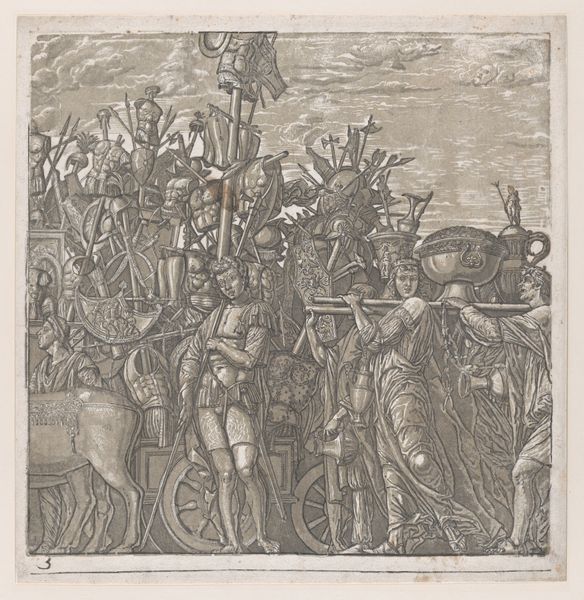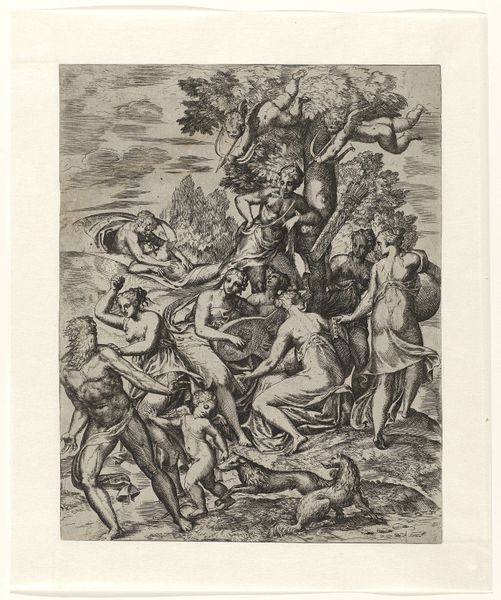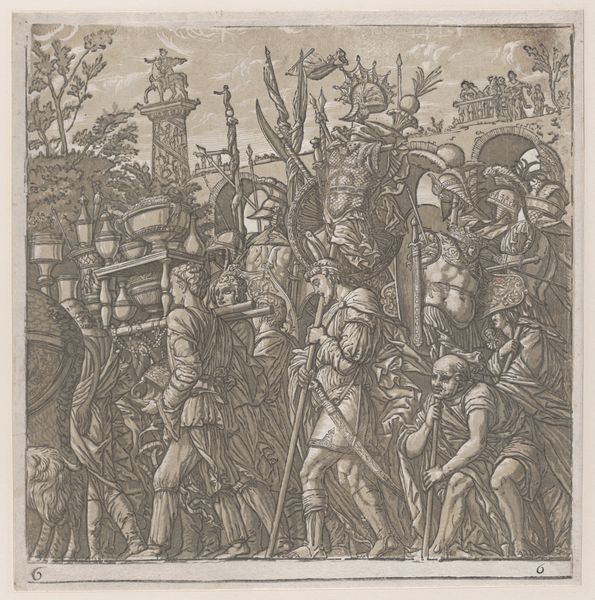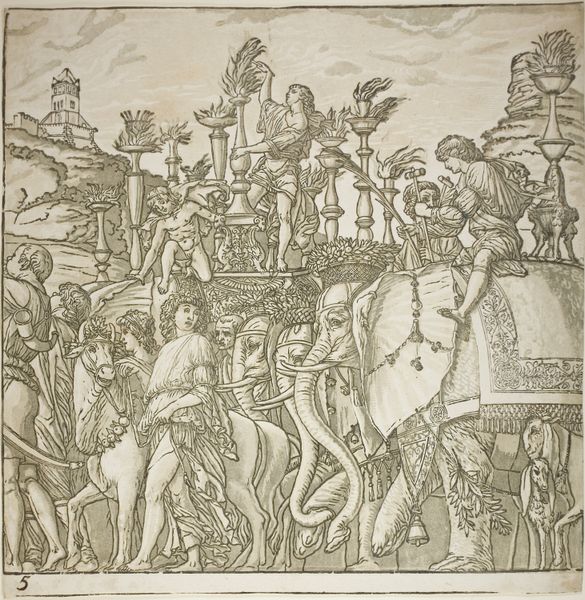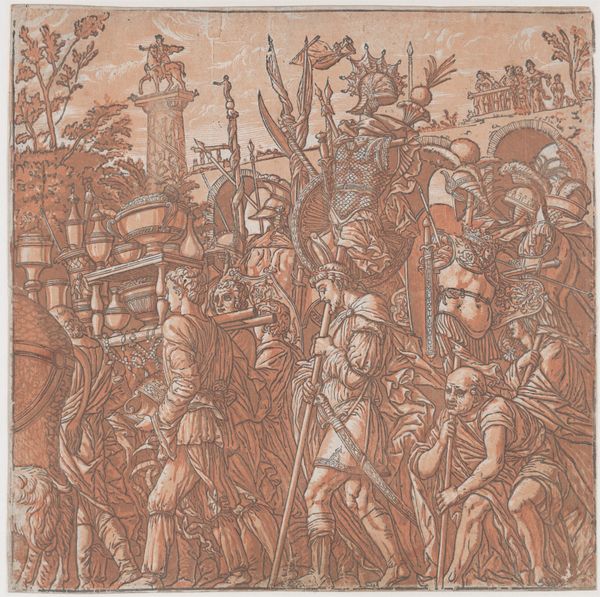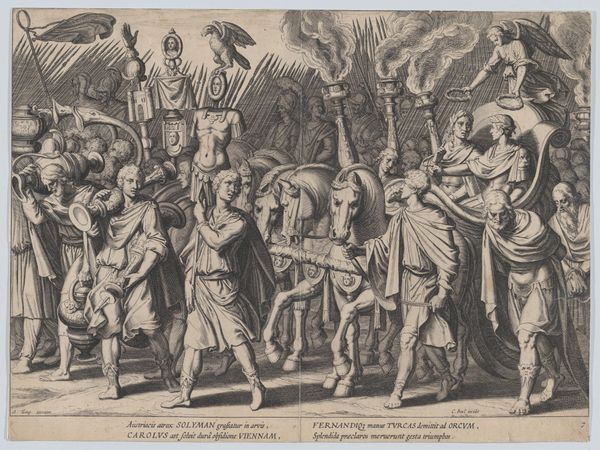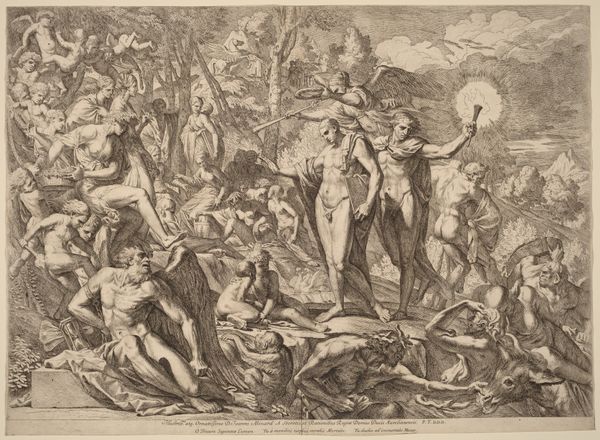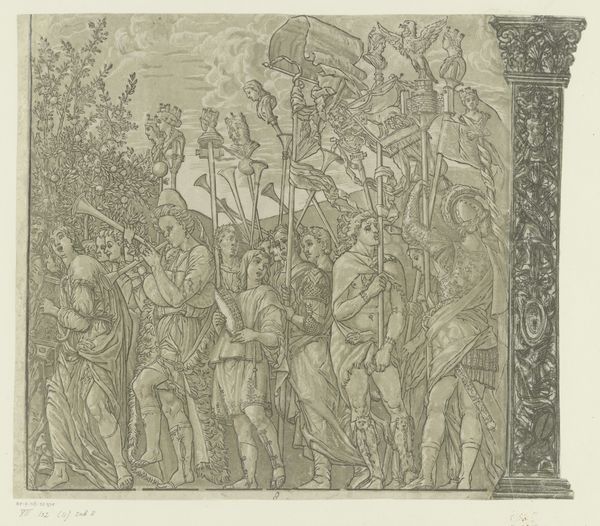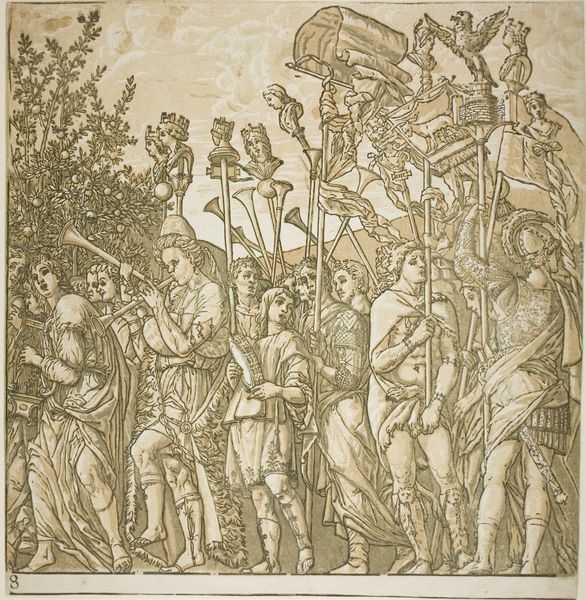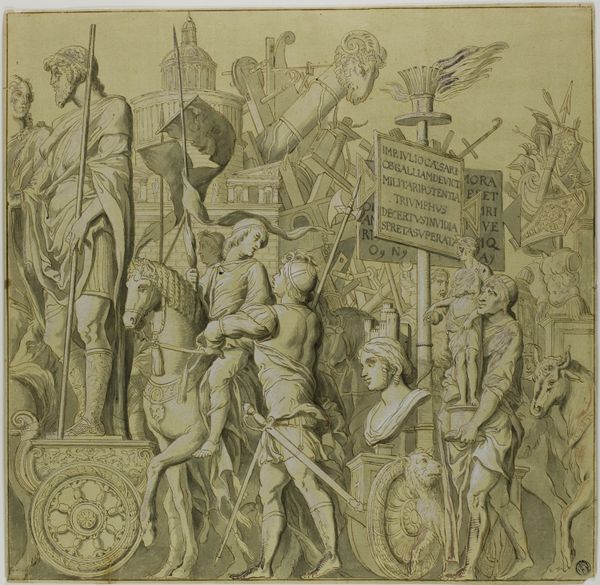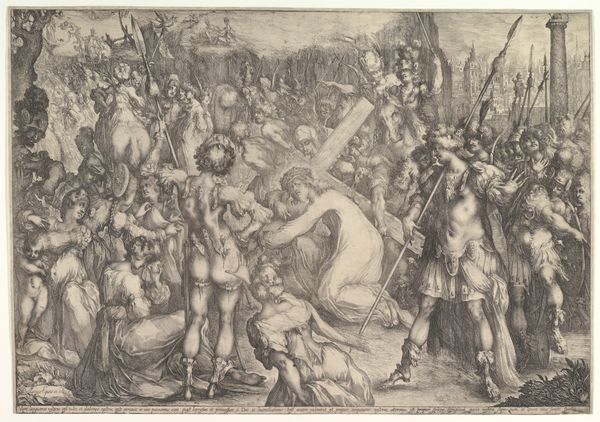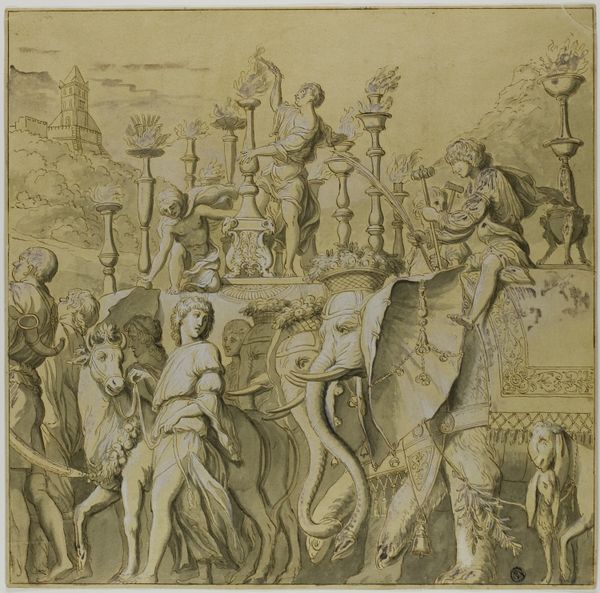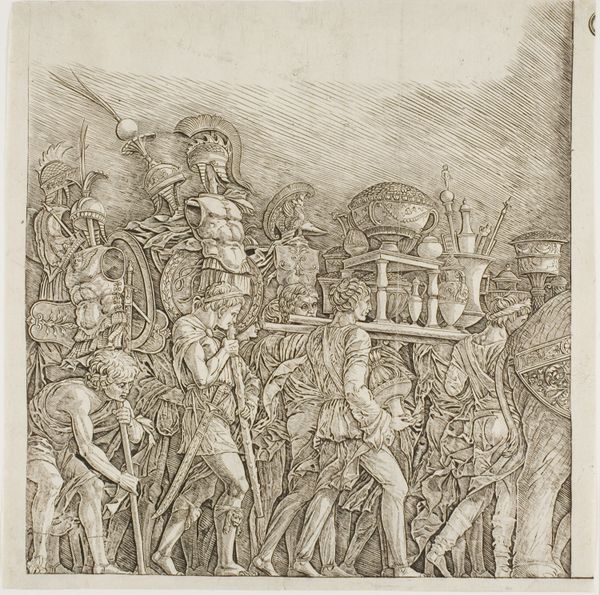
Triumphs of Julius Caesar: Canvas No. VI c. 18th century
0:00
0:00
drawing, print, paper, ink, pen
#
portrait
#
drawing
#
narrative-art
#
ink painting
# print
#
figuration
#
paper
#
form
#
11_renaissance
#
ink
#
line
#
pen
#
watercolour illustration
#
history-painting
#
academic-art
Dimensions: 370 × 370 mm
Copyright: Public Domain
Editor: So, this is *Triumphs of Julius Caesar: Canvas No. VI*, dating back to the 18th century and currently at the Art Institute of Chicago. It's by Andrea Mantegna and done with pen and ink on paper. The procession feels incredibly grand, almost theatrical, but I wonder, how do we unpack all the layers of history packed into this scene? Curator: It's a powerful piece precisely because it speaks to how history is constructed and consumed. Think about it: Mantegna, in the Renaissance, is already looking back at Rome, filtering it through a very specific lens of humanist ideals and courtly power. These "triumphs" were potent symbols, not just of military victory, but of the ruler's right to rule, constantly reinforced through public displays and, later, artworks like this. What do you notice about who gets to participate in this constructed glory? Editor: Well, most people seem to be caught in the spectacle of the triumph. There are figures hauling loot. Musicians seem detached. It's hard to miss the overwhelming display of military power. Curator: Exactly. And who commissioned such imagery? Certainly not the conquered, but the ruling class, to bolster their own image. It tells us a lot about how societies used and manipulated historical narratives for contemporary political gain. Do you think the artist is endorsing the triumphs themselves? Or subtly critiquing them? Editor: That’s a tough question. The grandeur suggests endorsement, but the sheer scale could also highlight the hubris of empire. It’s certainly a powerful statement about the creation of historical narrative. Curator: It shows how much our interpretation relies on understanding the social and political currents within which it was created, reminding us that history is always a conversation. Editor: Absolutely. Thinking about the artwork in terms of cultural construction gives a whole new understanding of its context.
Comments
No comments
Be the first to comment and join the conversation on the ultimate creative platform.
